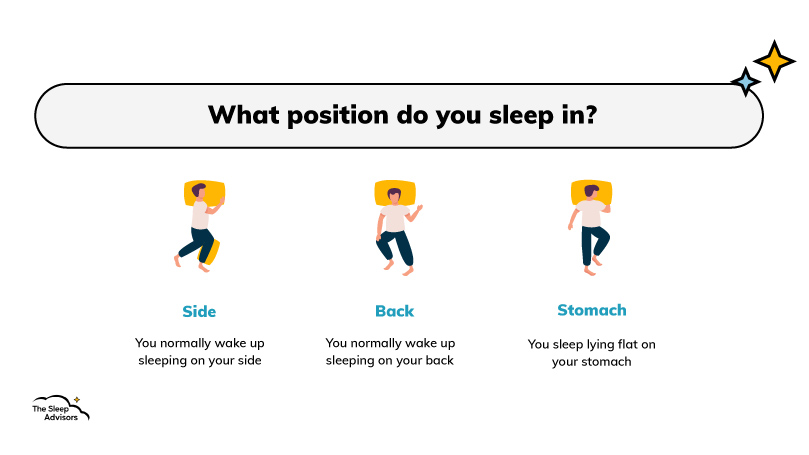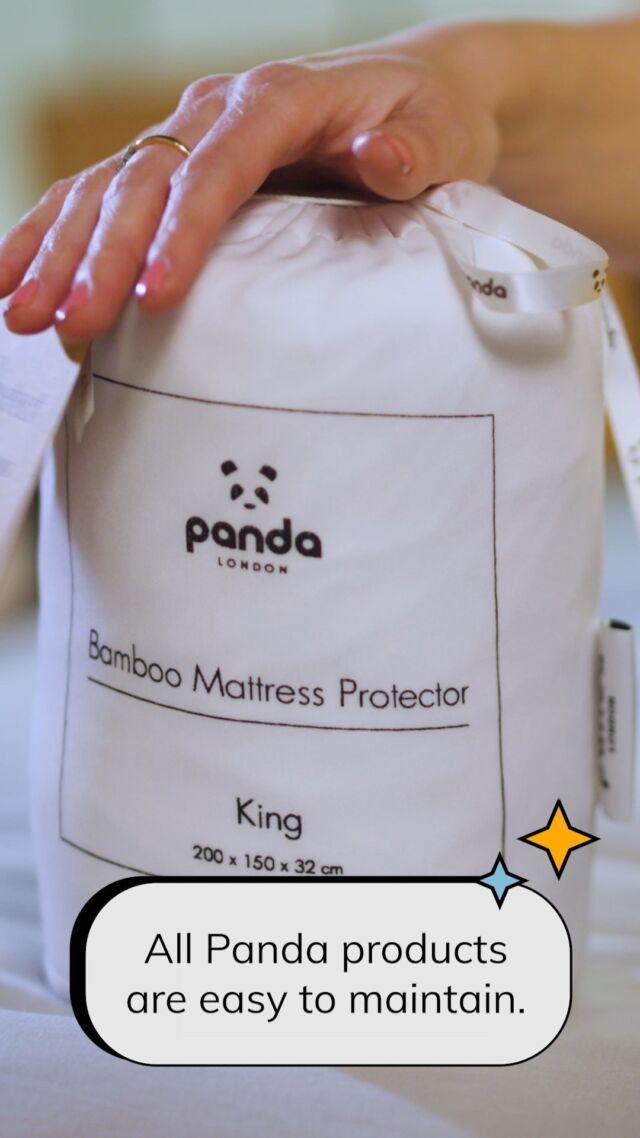Different types of down pillows

To start things off, let's go over all of the different types of down pillows. We say types but it's probably more precise to call them subtypes or variations. For example, how does goose down differ from duck down? What is the difference between down pillows and feather pillows?
So, let's go over all of these different features and explain how they impact the final product. And if you still have any questions by the end, feel free to ask us in the comments or get in contact directly!
Feather vs down pillows
The first thing we want to discuss is the difference between feather pillows and down pillows. This is because most of the time, your pillow will have more of one than the other. For example, a down pillow can have 95% down and 5% feathers while a feather pillow might have 50-60% feathers and 50-40% down.
Feather pillows
So, knowing what each of these materials is bringing to the table will help you choose the perfect pillow for you! Generally speaking, feathers add firmness to the pillow. They're stiffer and larger than down and pillows with more feathers tend to be firmer pillows. And we'll discuss later on why having a firm pillow might actually be a good thing.
The second benefit is that feathers are cheaper than down. So, if you're getting multiple new pillows, looking for a feather filling can keep the price down significantly. Plus, feathers are flatter, meaning that it's easier to get a low-loft feather pillow. We'll also discuss why that could be a good thing a bit later on. With that being said, we'd imagine quite a few people would still prefer down pillows.
Down pillows
Down is generally a lot softer and lighter. This makes the pillow very fluffy, which is usually the main selling point when getting down/feather pillows. Plus, down has a much higher fill power, meaning that the loft is going to be a lot bigger. And beyond just pillow fights, a high loft is incredibly beneficial for some sleeping positions.
Down pillows are also a bit more durable since the individual feathers are smaller and thus harder to damage. Feathers on the other hand can not only break but even poke through the pillow covers. However, as we've already mentioned, be prepared to pay a noticeably higher price if you want a pillow that's only filler with down.
Goose feather and down vs duck feather and down
The second big topic worth discussing is the difference between goose and duck feather and down. And, just like in the previous section, you can make a case for either, depending on what you're looking for. So, let's quickly go over the pros and cons of each.
Goose feather and down
When it comes to down pillows that use goose feather and down, you're looking at a luxury product. This is because geese typically have more down than ducks. And according to some, the down itself is also of a much higher quality. Although not everyone agrees on that point.
And you'll often see 100% goose-down pillows being advertised as the height of pillow luxury. Especially if they're Hungarian goose-down pillows! But that also means that you're going to be paying a pretty penny. So, you have to decide whether these extra plump pillows add enough comfort to your life to be worth the price tag.
Duck feather and down
As you might have surmised already, duck feather and down pillows are generally a bit less expensive and luxurious than their goose counterparts. That being said, they're still not cheap. And in terms of quality, a duck feather and down pillow can still be the best pillow you've ever had.
So, if you're looking for the most luxurious pillow on the market, go with goose down. However, if you just want a very solid pillow, either option is worth considering!
How to find the best down pillows UK
Now that we have a basic understanding of the differences between feather and down, let's get a bit more specific. Namely, if you wanted the perfect down pillows the UK market has to offer, how would you find them? This, of course, depends on exactly what you're looking for and what type of pillow you'd like.
So, let's go over all the main categories and see which down pillow is perfect for you. Just make a mental note of how you answered each section and you should be able to find the down pillow of your dreams!
What's your sleeping position?
The first question we want you to answer is what's your sleeping position? This is because this one factor heavily influences what type of down pillow you want to look for. And getting the wrong kind can rob you of the good night's sleep you've been searching for! So, let's go through them one by one.

Side sleepers

For side sleepers, it's important to go for a down pillow with a big loft. This is because the pillow needs to cover the distance from your shoulder to your head. It's also not a bad idea to have a slightly firmer pillow, as you don't want your head to completely sink into the pillow.
This has the added benefits of firm down pillows usually being a bit cheaper than fluffy down pillows. However, the most important thing to keep in mind is that your neck is straight. So, regardless of whether you go for a large loft that lets your head sink in or a lower loft firm pillow is up to you.
Back sleepers
When it comes to back sleepers, your choice of pillow is a bit more forgiving. Generally, you just want to make sure that the loft isn't too big. In other words, if your head is tilted forward, you might want a softer down pillow.
But aside from that, there isn't too much you need to worry about. You can get a firmer pillow if you think your neck doesn't have enough support. But a soft pillow will serve you just as well.
Stomach sleepers

When it comes to stomach sleepers, getting all the nights sleep you need is a bit more difficult. That's because there are two things you need to get right. First off, you want to keep the loft as low as possible. Unlike a side sleeper, there's nothing between your head and the pillow.
And this means that if the pillow has a high loft, your head is going to be tilted upwards. A few nights like that and you're bound to have neck pain. But that's not all. Just like a side sleeper, you also have to think about how your mouth is positioned.
This is because if the pillow is too soft and your head sinks into the pillow, it could potentially interfere with your breathing. This is mostly applicable if you sleep in the middle of the pillow. So, getting a firmer, flat, square pillow might be a better option.
Do you have any allergies?
Another important thing to keep in mind is whether you have any potential allergies. While it's rare for people to be allergic to feather pillows themselves, dust mites are a completely different story. And if your pillow doesn't have a good cover, the outer layer could end up covered in dust particles before you know it.
So, if you tend to flare up quite often, get a cover that's machine washable and keep it clean. It also helps to have a hypoallergenic cover, such as a cotton cover, for the same reason. Lastly, if you want to be 100% certain, look for a pillow with an OEKO-Tex certification to guarantee no dangerous chemicals were involved.
How much are you willing to spend?

Down pillows vary greatly when it comes to price. And we believe it's best to set your budget beforehand so that you don't end up regretting your purchase. So, do you want luxury down pillows? Then look for Hungarian goose-down pillows with a cotton cover that suits your sleeping style. Another solid option is a down hybrid pillow, as it uses feathers and down interchangeably for the best results.
However, if you want to keep the price down, duck-down pillows are going to be more to your liking. And if you want the cheapest options available, you can go for down alternatives or more feather-filled pillows.
It's also worth mentioning that if you do decide to go for a down alternative pillow, you'll be keeping things a bit more green. And that statement is going to make a lot more sense once we get into how down is actually collected.
How do they make down pillows?
To understand how down pillows are made, we must first understand how down and feathers are collected and where they come from. According to the American Down & Feather Council, 80% of down and feathers are sourced from China. And a whopping 90% of feather and down comes from ducks.
And as you can imagine, this usually takes place in giant factories where as many birds as possible are crammed together so that the company can save some money. Plus, since birds (and especially ducks) are also sourced for their meat and their eggs, the company can kill two thousand birds with one stone.
Wild birds are rarely targeted, as it's not as efficient, but rather the birds are raised and killed within factories. Needless to say, it's as far from a bird sanctuary as you can get. But how are the feathers and the down actually sourced? Well, let's just say that you might get a bit queasy if you have a weak stomach.
How are down and feathers taken from birds?
This is a question that seems like it has an obvious answer, but it gets more disturbing the more you think about it – especially if you have a few feathered friends of your own. Generally speaking, there are three main methods for sourcing bird feathers and down.
Post-mortem
As we've mentioned, birds have already been targeted for hundreds of years because of their meat and their eggs. The former of which requires you to kill the bird, and if you want a good profit, you'd do it while the bird is still rather young (sometimes even just a few weeks after hatching). So, companies claim that the feathers and down are just a natural byproduct of the meat industry.
However, regardless of where you stand on this question, a bird is still getting killed – so, morality has left the building a long time ago. Unfortunately, however, this is one of the more humane ways feathers can be sourced.
Live plucking
This is one of those practices that people who celebrate National Bird Day are probably the most furious about. After all, it involves plucking feathers from birds while they're still alive. Not to mention that they're given nothing to ease the pain and things like ripped skin, broken bones, or even death aren't all that rare.
So, among animal lovers and future bird owners alike, the practice of live plucking has been demonized quite a bit. And if we were to take a guess, we think that's how the following procedure came to be.
Gathering
On paper, this is the most humane way you can source feathers and down. This is because it details only taking feathers and down that would've naturally fallen out anyway. So, it's saving the bird some trouble and you get a comfortable pillow – truly the kind of practice bird enthusiasts celebrate.
However, the reality of the situation is likely a bit more grim. Owing to the fact that feathers mature at different speeds, it's very unlikely that the workers check every bird individually before beginning to pluck.
Plus, this is usually done by a machine, which could also easily kill the bird on the spot. And if you want to be cynical, it just sounds like live plucking with some extra steps. However, we do hope that this method can one day be perfected and keep the birds completely safe.
How to wash down pillows

Lastly, let's talk about how you should keep your down pillows clean. After all, down isn't as sturdy as microfibre, so, it's not immediately obvious how you should wash them. And the short answer is that you really shouldn't be washing down pillows in the first place.
This is because feathers are coated in a special oil and putting them through a wash cycle could ruin them to an extent. And if you use any sort of harsh chemicals or softeners, it's pretty much game over for your down pillow. So, if possible, don't get yourself into a situation where your down pillow needs to be washed.
Instead, get a pillow protector, keep the pillow covers clean, and refluff your pillow whenever it starts to sag. But if you absolutely must wash your down pillow, make it as gentle as possible. So, no chemicals, low heat, low spin. And once it's done, make 100% sure that it's completely dry – even if you have to put it in the drier twice.
This is because moisture can make the down clump and completely ruin your pillows. Plus, it's always advised to read the care label of your specific pillow – as some pillows might differ from what we've described so far.
Conclusion
Overall, we'd say that down pillows add a lot of comfort to one's life. However, they're not always the easiest pillows to take care of or pick out. But hopefully, you're now armed with all the knowledge you need in order to find the best down pillows and the UK market!
Spread the word
Related products:

















There are no comments yet
"*" indicates required fields